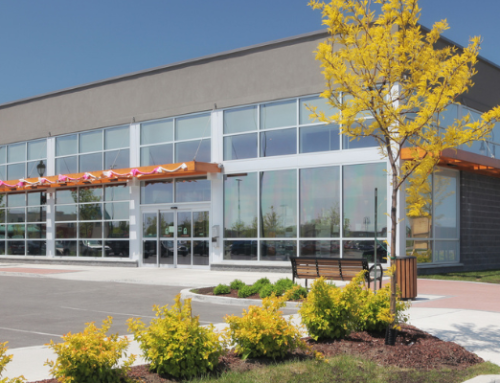Supply chain disruptions will continue to affect the construction industry for the foreseeable future. Compounding issues like product and worker shortages, port backups, and production delays are forecasted to limit industry growth. Prices are higher, raw materials are harder to come by, and sales are hurting – or could be if they aren’t already. Construction firms must evaluate their supply chain strategy and assess the ongoing impact to cash flow management if they are to remain profitable.
Sources of Industry Delays
There are several causes for the current supply chain disruption. At a high level, ports – especially Long Beach, CA, the second busiest port in the country – are backed up, with some shippers resorting to chartering small boats to deliver goods to other ports.
Then there is the raw material shortage. One report found that 71 percent of construction contractors are facing at least one material shortage – often lumber, steel, electrical supplies, and lighting supplies. Increased consumer demand, especially for lumber, is keeping prices high and further constraining contractor growth and optimism. Product delays and material shortages can impact schedules, contracts, and even cause some contractors to pass on work if they know they can’t get the supplies in on time.
Lack of skilled labor continues to be an issue, and transportation costs are up, too.
Some contractors have passed on price increases and risks to clients. Others have started using alternative materials or products. Ordering ahead for the next 12-18 months is a viable strategy for some and depending on the nature of the product and storage capacity. Still others are simply holding off on new construction altogether.
In an ongoing, unpredictable environment, contractors must look to cash flow management to mitigate risk.
Risk Management Strategy
It’s not enough to sit back and make educated guesses on what will happen next or wait to react based on what may or may not happen. Proactively address how the firm will handle supply chain management issues.
There are several excellent places to begin.
- Review processes and costs to ensure an optimal, efficient method is being used. For example, review your variable and fixed costs for potential unneeded costs that can be cut for an immediate cash benefit.
- Analyze the current workforce during a supply and demand shortage: how would changes to the supply chain impact the workforce when supply comes back?
- Assess the most impacted suppliers and make back-up plans for the near future. Try to source nearby suppliers to keep transportation costs lower, or smaller suppliers that could fill specific needs.
- Have regular conversations with the most frequent suppliers. Talk to them about what they’re dealing with, how they plan to adjust, and whether they can meet ongoing material demands. If not, find out what they suggest. Simply staying in touch is an important step in managing supply chain disruptions.
- Look for other potential work opportunities in the short-term that may not be as dependent on supply chain dilemmas. This could be a great time to branch out and explore different types of projects and/or clients.
In any case, proactive planning will create more favorable outcomes than a ‘wait-and-see’ approach, even in a normal economy.
Cash Flow Management Strategy
Staying on top of cash flow management should be a regular practice. Cash flow forecasting can help construction contractors better manage planning, track costs, manage risk, create budgets, and allocate resources.
- Planning
- Identify milestones, budget, and constraints. Know what the firm is working with and how to stay on track to meet certain goals or benchmarks.
- Tracking
- Regularly compare projected vs. actual in terms of costs, timeline, and more. What changed when a project was completed early or on time versus late? Look for unexpected costs as well as scope creep in projects, especially now.
- Risk management
- Try to identify risks as they become apparent and address them. Risks come in many forms, from the supply chain to unexpected weather events, cybersecurity, client changes, and workforce issues.
- Budgeting
- Manage expenses and project revenue. Working with a cloud-based tech platform is crucial to get a daily snapshot of financial performance. Firm owners and management should be able to log in on any device, from anywhere and see a real-time financial dashboard. If not, it’s time to upgrade.
- Resource management
- Manage the workforce to meet current and projected needs.
When conducting cash flow projections, it’s important to include multiple scenarios; at least three, but perhaps more in an uncertain environment. Use information gleaned from budgeting and risk management activities to make informed decisions based on data, not hunches. Forecasting helps to identify the best times to buy (or not) materials based on pricing, labor shortages, or work delays, for example.
Just like regular suppliers, stay in touch with lenders. They can help identify opportunities to save cash on any debt service and keep tabs on available lines of credit should the need arise. Also work with an external accountant to help identify additional working capital resources and cash flow strategies.
Spend time on billing and collections, too. Conduct financial ratio analysis to compare performance against industry peers and identify gaps in collection. Remember, a good collections policy is money in the bank – literally. This is also an opportunity to revisit or set billing terms with suppliers to ensure proper timing between invoice collection compared to payment.
In any case, there are opportunities for cash savings, and even growth, but construction firms must be on the offensive with regard to strategic planning and financial management. The Construction and Real Estate team at PBMares is ready to assist clients in navigating an uncertain environment. Contact us today.




